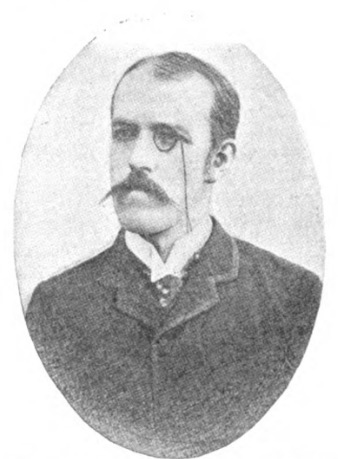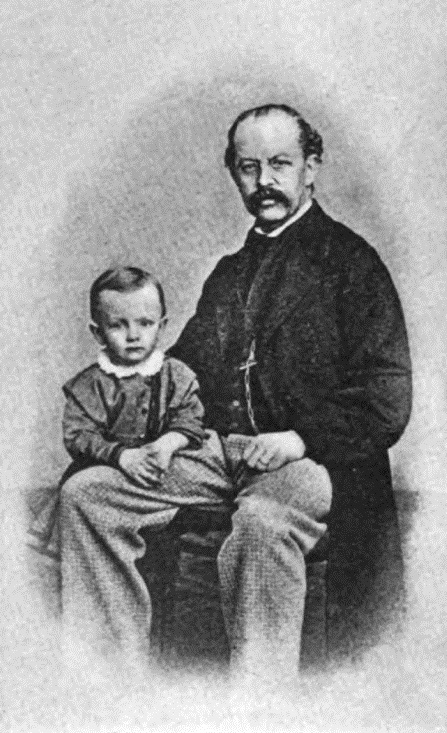|
Théâtre De L'Œuvre
The Théâtre de l'Œuvre is a Paris theatre on the Right Bank, located at 3, Cité Monthiers, entrance 55, rue de Clichy, in the 9° arrondissement. It is commonly conflated and confused with the late-nineteenth-century theater company named Théâtre de l'Œuvre (or simply, L'Œuvre), founded by actor-director-producer Aurélien Lugné-Poe, who would not take control of this performance space until 1919. His company is best known for its earlier phase of existence, before it acquired this theatre venue. From 1893 to 1899, in various Parisian theatres, Lugné-Poe premiered modernist plays by foreign dramatists (Ibsen, Strindberg, Hauptmann, Bjørnson, Wilde), as well as new work by French Symbolists, most notoriously Alfred Jarry’s nihilistic farce ''Ubu Roi'', which opened in 1896 at Nouveau-Théâtre (today, Théâtre de Paris, 15, rue Blanche). It is best to discuss the surviving theater building and Lugné-Poe's several-phase theater production company separately, though ... [...More Info...] [...Related Items...] OR: [Wikipedia] [Google] [Baidu] |
Paris
Paris () is the Capital city, capital and List of communes in France with over 20,000 inhabitants, most populous city of France, with an estimated population of 2,165,423 residents in 2019 in an area of more than 105 km² (41 sq mi), making it the List of cities proper by population density, 30th most densely populated city in the world in 2020. Since the 17th century, Paris has been one of the world's major centres of finance, diplomacy, commerce, Fashion capital, fashion, gastronomy, and science. For its leading role in the arts and sciences, as well as its very early system of street lighting, in the 19th century it became known as "the City of Light". Like London, prior to the Second World War, it was also sometimes called Caput Mundi#Paris, the capital of the world. The City of Paris is the centre of the Île-de-France Regions of France, region, or Paris Region, with an estimated population of 12,262,544 in 2019, or about 19% of the population of France, making the ... [...More Info...] [...Related Items...] OR: [Wikipedia] [Google] [Baidu] |
Maurice Denis
Maurice Denis (; 25 November 1870 – 13 November 1943) was a French painter, decorative artist, and writer. An important figure in the transitional period between impressionism and modern art, he is associated with ''Les Nabis'', symbolism, and later neo-classicism."Denis, Maurice." Belinda Thomson, Grove Art Online, Oxford Art Online, Oxford University Press. Retrieved 18 June 2014. His theories contributed to the foundations of cubism, fauvism, and abstract art. Following the First World War, he founded the Ateliers d'Art Sacré (Workshops of Sacred Art), decorated the interiors of churches, and worked for a revival of religious art. Biography Early life Maurice Denis was born 25 November 1870, in Granville, Manche, a coastal town in the Normandy region of France. His father was of modest peasant origins; after four years in the army, he went to work at the railroad station. His mother, the daughter of a miller, worked as a seamstress. After their marriage in 1865, they m ... [...More Info...] [...Related Items...] OR: [Wikipedia] [Google] [Baidu] |
Henri De Toulouse-Lautrec
Comte Henri Marie Raymond de Toulouse-Lautrec-Monfa (24 November 1864 – 9 September 1901) was a French painter, printmaker, draughtsman, caricaturist and illustrator whose immersion in the colourful and theatrical life of Paris in the late 19th century allowed him to produce a collection of enticing, elegant, and provocative images of the sometimes decadent affairs of those times. Born into the aristocracy, Toulouse-Lautrec broke both his legs around the time of his adolescence and, due to the rare condition Pycnodysostosis, was very short as an adult due to his undersized legs. In addition to his alcoholism, he developed an affinity for brothels and prostitutes that directed the subject matter for many of his works recording many details of the late-19th-century bohemian lifestyle in Paris. Toulouse-Lautrec is among the painters described as being Post-Impressionists, with Paul Cézanne, Vincent van Gogh, Paul Gauguin, and Georges Seurat also commonly consider ... [...More Info...] [...Related Items...] OR: [Wikipedia] [Google] [Baidu] |
Henrik Ibsen
Henrik Johan Ibsen (; ; 20 March 1828 – 23 May 1906) was a Norwegian playwright and theatre director. As one of the founders of modernism in theatre, Ibsen is often referred to as "the father of realism" and one of the most influential playwrights of his time. His major works include ''Brand'', ''Peer Gynt'', ''An Enemy of the People'', ''Emperor and Galilean'', ''A Doll's House'', ''Hedda Gabler'', ''Ghosts'', '' The Wild Duck'', ''When We Dead Awaken'', ''Rosmersholm'', and ''The Master Builder''. Ibsen is the most frequently performed dramatist in the world after Shakespeare, and ''A Doll's House'' was the world's most performed play in 2006. Ibsen's early poetic and cinematic play ''Peer Gynt'' has strong surreal elements. After ''Peer Gynt'' Ibsen abandoned verse and wrote in realistic prose. Several of his later dramas were considered scandalous to many of his era, when European theatre was expected to model strict morals of family life and propriety. Ibsen's later w ... [...More Info...] [...Related Items...] OR: [Wikipedia] [Google] [Baidu] |
Henri De Régnier
Henri-François-Joseph de Régnier (28 December 1864 – 23 May 1936) was a French symbolist poet, considered one of the most important of France during the early 20th century. Life and works He was born in Honfleur ( Calvados) on 28 December 1864, and educated in Paris for law. In 1885 he began to contribute to the Parisian reviews, and his verses were published by most of the French and Belgian periodicals favorable to the symbolist writers. Having begun as a Parnassian, he retained the classical tradition, though he adopted some of the innovations of Jean Moréas and Gustave Kahn. His vaguely suggestive style shows the influence of Stéphane Mallarmé, of whom he was an assiduous disciple. His first volume of poems, ''Lendemains'', appeared in 1885, and among numerous later volumes are ''Poèmes anciens et romanesques'' (1890), ''Les Jeux rustiques et divins'' (1890), ''Les Médailles d'argile'' (1900), ''La Cité des eaux'' (1903). He is also the author of a series of real ... [...More Info...] [...Related Items...] OR: [Wikipedia] [Google] [Baidu] |
Henry Bataille
Félix-Henri "Henry" Bataille (4 April 1872, in Nîmes – 2 March 1922, in Rueil-Malmaison) was a French dramatist and poet. His works were popular between 1900 and the start of World War I. Bataille's parents died when he was young. He attended the École des Beaux-Arts and Académie Julian(f ''La Rampe : revue des théâtres, music-halls, concerts, cinématographes'', 1922/ref> to study painting, but started writing when he was 14. Henry wrote plays and poems, but after the success of his second play, ''La Lépreuse'', he became a playwright exclusively. Bataille's early works explored the effects of passion on human motivation and how stifling the social conventions of the times could be. For example, ''Maman Colibri'', is about a middle-aged woman's affair with a younger man. Later, Bataille would gravitate towards the theatre of ideas and social drama. Bataille was also a theorist of subconscious motivation. While he did not use his theories in most of his own works, he ... [...More Info...] [...Related Items...] OR: [Wikipedia] [Google] [Baidu] |
August Strindberg
Johan August Strindberg (, ; 22 January 184914 May 1912) was a Swedish playwright, novelist, poet, essayist and painter.Lane (1998), 1040. A prolific writer who often drew directly on his personal experience, Strindberg wrote more than sixty plays and more than thirty works of fiction, autobiography, history, cultural analysis, and politics during his career, which spanned four decades. A bold experimenter and iconoclast throughout, he explored a wide range of dramatic methods and purposes, from naturalistic tragedy, monodrama, and history plays, to his anticipations of expressionist and surrealist dramatic techniques. From his earliest work, Strindberg developed innovative forms of dramatic action, language, and visual composition. He is considered the "father" of modern Swedish literature and his '' The Red Room'' (1879) has frequently been described as the first modern Swedish novel. In Sweden, Strindberg is known as an essayist, painter, poet, and especially as a novelist ... [...More Info...] [...Related Items...] OR: [Wikipedia] [Google] [Baidu] |
Gerhart Hauptmann
Gerhart Johann Robert Hauptmann (; 15 November 1862 – 6 June 1946) was a German dramatist and novelist. He is counted among the most important promoters of literary naturalism, though he integrated other styles into his work as well. He received the Nobel Prize in Literature in 1912. Life Childhood and youth Gerhart Hauptmann was born in 1862 in Obersalzbrunn, now known as Szczawno-Zdrój, in Lower Silesia (then a part of the Kingdom of Prussia, now a part of Poland). His parents were Robert and Marie Hauptmann, who ran a hotel in the area. As a youth, Hauptmann had a reputation of being loose with the truth. His elder brother was Carl Hauptmann. Beginning in 1868, he attended the village school and then, in 1874, the Realschule in Breslau for which he had only barely passed the qualifying exam. Hauptmann had difficulties adjusting himself to his new surroundings in the city. He lived, along with his brother Carl, in a somewhat run-down student boarding house before fi ... [...More Info...] [...Related Items...] OR: [Wikipedia] [Google] [Baidu] |
Oscar Wilde
Oscar Fingal O'Flahertie Wills Wilde (16 October 185430 November 1900) was an Irish poet and playwright. After writing in different forms throughout the 1880s, he became one of the most popular playwrights in London in the early 1890s. He is best remembered for his epigrams and plays, his novel '' The Picture of Dorian Gray'', and the circumstances of his criminal conviction for gross indecency for consensual homosexual acts in "one of the first celebrity trials", imprisonment, and early death from meningitis at age 46. Wilde's parents were Anglo-Irish intellectuals in Dublin. A young Wilde learned to speak fluent French and German. At university, Wilde read Greats; he demonstrated himself to be an exceptional classicist, first at Trinity College Dublin, then at Oxford. He became associated with the emerging philosophy of aestheticism, led by two of his tutors, Walter Pater and John Ruskin. After university, Wilde moved to London into fashionable cultural and social circ ... [...More Info...] [...Related Items...] OR: [Wikipedia] [Google] [Baidu] |
Sanskrit Drama
The term Indian classical drama refers to the tradition of dramatic literature and performance in ancient India. The roots of drama in the Indian subcontinent can be traced back to the Rigveda (1200-1500 BCE), which contains a number of hymns in the form of dialogues, or even scenes, as well as hymns that make use of other literary forms such as animal fables However, Indian drama begins its classical stage in the 3rd-4th century BCE with the composition of the Nātyaśāstra (''lit. The Science of Drama''). Indian classical drama is regarded as the highest achievement of Sanskrit literature. The Buddhist playwright, poet and philosopher Asvaghosa, who composed the '' Buddhacarita'', is considered to have been one of the first Sanskrit dramatists along with Bhāsa, who likely lived in the 2nd century BCE, and is famous for writing two of the only surviving tragedies in Sanskrit drama. Despite its name, a classical Sanskrit drama uses both Sanskrit and Prakrit languages giving ... [...More Info...] [...Related Items...] OR: [Wikipedia] [Google] [Baidu] |








